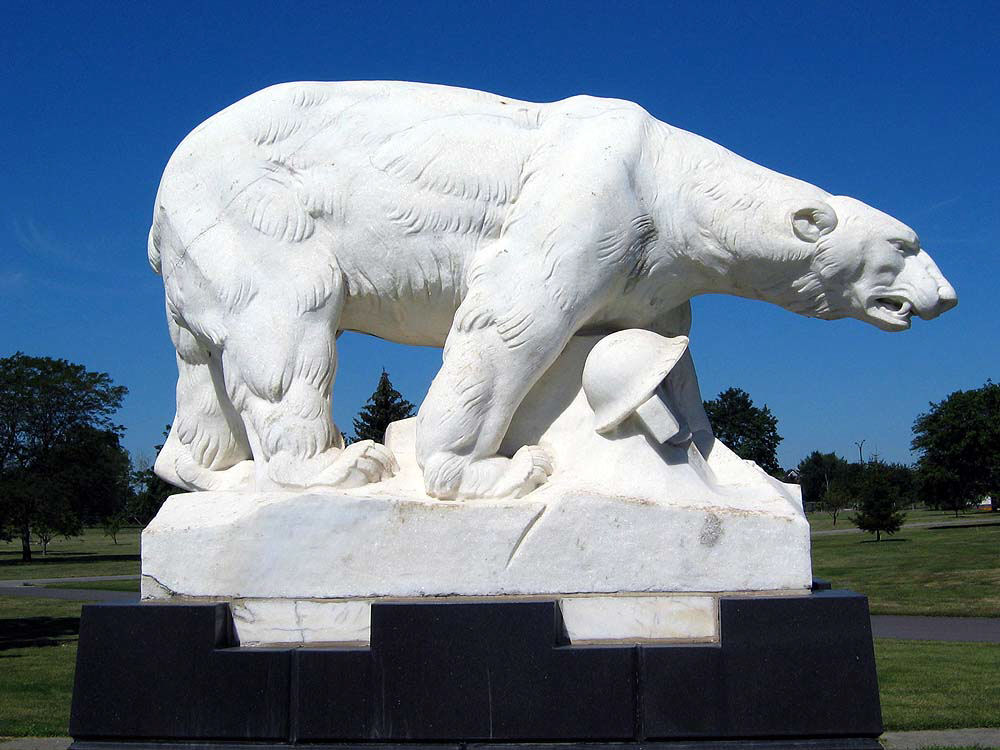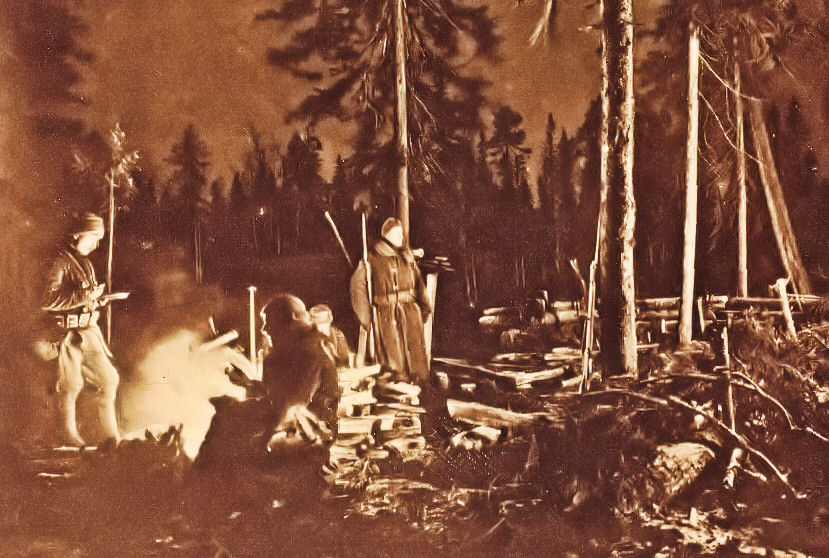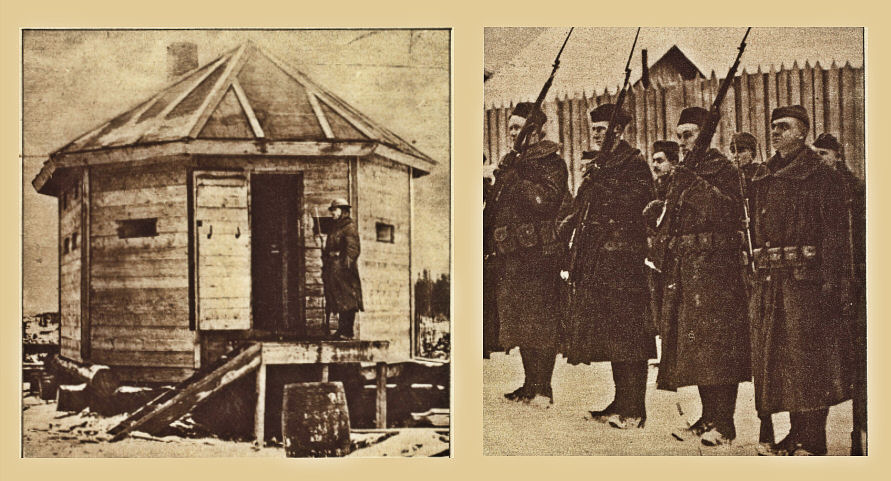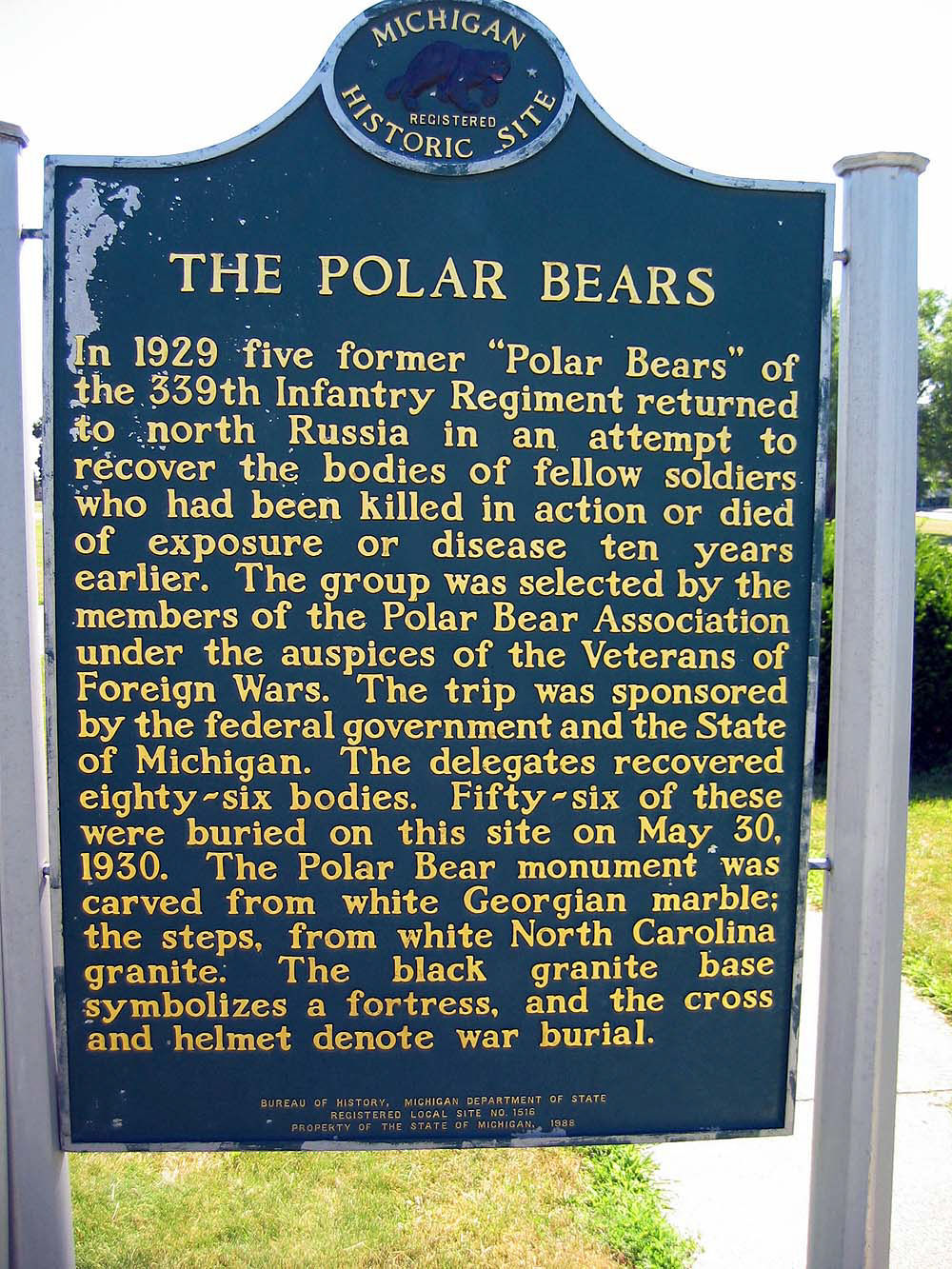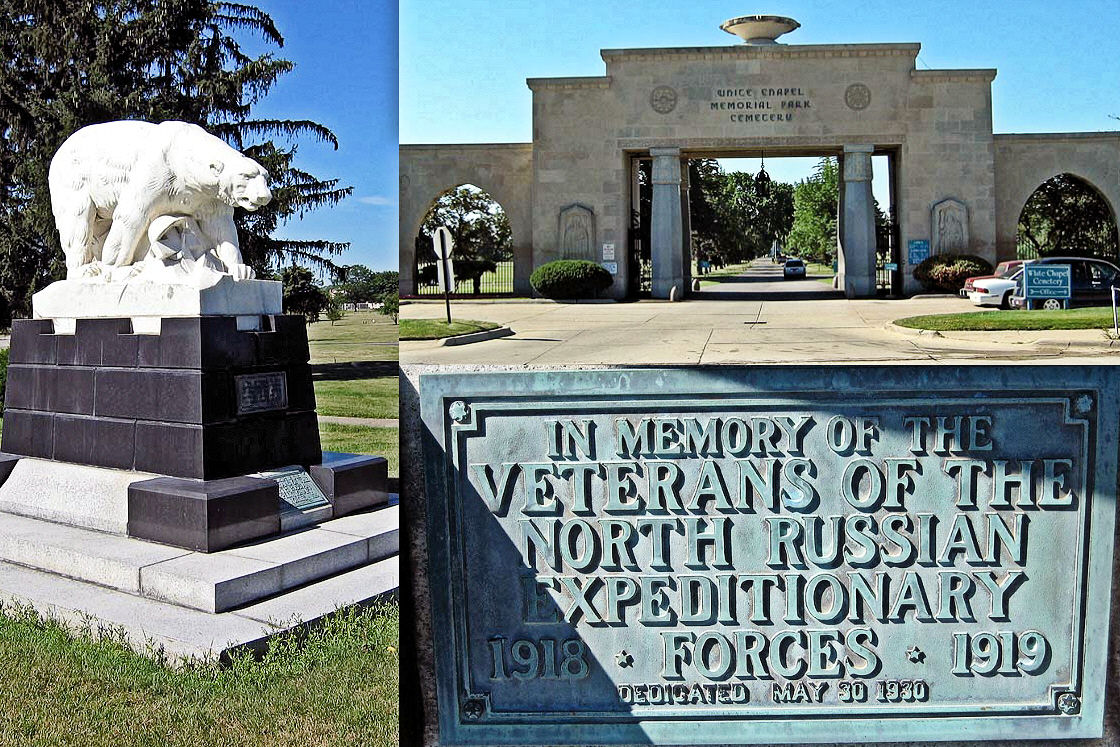From Mufti
by Sapper (Herman Cyril McNeile)
The officer lying back in the home-made chair tilted the peak of his cap over his eyes and let his book slip gently to the ground. A few moments later, after various unavailing waves of the hand, he pulled out a handkerchief of striking design and carefully adjusted it over his face. Then, with his hands dug deep in his pockets to remove even a square inch of skin from the ubiquitous fly, he prepared to slumber. And shortly afterwards a gentle rise and fall of the centre bulldog, so wonderfully portrayed on the bandana, announced that he had succeeded.
To anyone fresh from England who desired to see War the scene would have been disappointing. There were no signs of troops swinging down a road, singing blithely, with a cheery smile of confidence on their faces and demanding to be led back forthwith to battle with the Huns. There were no guns belching forth: the grim Panoply of War, whatever it may mean, was conspicuous by its absence. Only a very fat quartermaster-sergeant lay asleep in the sun and snored, while an ancient and dissolute old warrior, near by, was engaged in clearing out a drain as part of his Field Punishment, and had just discovered a dead dog in it. He was not singing blithely: he had no cheery smile of confidence on his face: he was just talking—gently to himself.
The field was on a slight ridge. Above the camp there floated one of a line of sausage balloons, and the cable to which it was attached stretched up taut from some point near the farmhouse behind. A triangular flag, like a burgee, flew straight out in the breeze from half-way up the cable, and the basket, looking absurdly small, hung down like a black dot below the balloon.
Peace was the keynote of the whole situation. In front the country lay stretched out, with its hedges and trees, its fields and farmhouses. In certain places there ran long rows of poles with strips of brown material stretched between them, which a spectator would rightly conclude was camouflage erected to screen the roads. Only from what? Where was the Boche in this atmosphere of sleep and quiet?
Beyond the silent countryside rose a line of hills. They seemed to start and finish abruptly—an excrescence in the all-pervading flatness. On the top of the near end of the line, clear cut against the sky, the tower and spires of a great building; at the far end, on a hill separated—almost isolated—from the main ridge, a line of stumps, gaunt tooth-pick stumps standing stiffly in a row. There was no sign of life on the hills, no sign of movement. They were dead and cold even in the warm glow of the afternoon sun. Especially the isolated one at the far end with its row of sentinel trees. There was something ghostly about it—something furtive.
And then suddenly a great column of yellow smoke rose slowly from its centre and spread like a giant mushroom. Another and another appeared, and the yellow pall rolled down the side twisting and turning, drifting into the air and eddying over the dark, grim slope. Gradually it blotted out that isolated hill, like fog reeking round a mountain top, and as one watched it, fascinated, a series of dull booms came lazily through the air.
"Jerry gettin' it in the neck on Kemmel." Two men passing by were regarding the performance with perfunctory interest, while the purple bulldog still rose and fell, and the dissolute old warrior did not cease talking to himself.
"Derek scooped the bally lot as usual." An officer appeared at the entrance of a tin structure in one corner of the field with a bundle of letters in his hand. "Look at the dirty dog there—sleeping like a hog—in the only decent chair."
He disappeared inside to emerge again in a moment with a badminton racket and a shuttlecock. "On the bulldog—one round rapid fire." He fired and with a loud snort the sleeper awoke.
"You are charged with conduct to the prejudice, etc.," said the marksman severely, "in that you did spread alarm and despondency amongst the troops by disguising yourself as a disease and making noises indicative of pain."
Derek Vane stretched himself and stood up. "We are feeling well, thank you—and require nourishment. Does tea await me, and if not—why not?" He took his mail and glanced through it. "How they love me, dear old boy! What it is to be young and good looking, and charm. . . ."
There was a loud shout and the deck chair became the centre of a struggling mob. Shortly afterwards a noise of ripping canvas announced that it had acted as deck chairs have acted before when five people sit on them at the same moment.
"Look out, you mugs, you've broken it." Vane's voice came dimly from the ground. "And my face is in an ants' nest."
"Are you good looking and charming?" demanded an inexorable voice.
No. Get off, Beetle; you've got bones on you like the human skeleton at Barnum's."
"What are you like?" pursued the same inexorable voice.
"Horrible," spluttered Vane. "A walking nightmare; a loathly dream."
"It is well—you may arise."
The mass disintegrated, and having plucked the frame of the chair from the body of an officer known to all and sundry as the Tank—for obvious reasons—they moved slowly towards the mess for tea.
In all respects an unwarlike scene, and one which would disappoint the searcher after sensation. Save for the lorries which bumped ceaselessly up and down the long straight road below, and the all-pervading khaki it might have been a scene at home before the war. The yellow fog had cleared away from Kemmel, and over the flat country the heat haze rose, shimmering and dancing in the afternoon sun. In the field next to the camp an ancient Belgian was ploughing, his two big Walloon horses guided by a single cord, while from behind the farm there came the soft thud-thud of a football.
And then it came. In a few seconds the air was filled with the thumping of Archie and the distant crackle of machine-guns.
"By Jove! there he is," cried the Tank. "He's got him too."
The officers halted and stared over the dead town of Poperinghe, where flash after flash of bursting shrapnel proclaimed a Boche aeroplane. They saw him dive at a balloon—falling like a hawk; then suddenly he righted and came on towards the next. From the first sausage two black streaks shot out, to steady after a hundred feet or so, and float down, supported by their white parachutes. But the balloon itself was finished. From one end there glowed for an instant a yellow furnace of fire. Then a flame shot up, followed by clouds of black smoke. Like a stone, the basket crashed down, passing the two white, drifting specks on the way, and leaving behind it a long streak of black.
Rolling from side to side like a drunken man, the aeroplane was coming towards its next quarry. Lewis guns, machine-guns, Archies were now all firing full blast, but the pilot continued on his course. Tracer bullets shot up like lines of light, but so far he had come through untouched. From the balloons the observers dived out until at one moment there were ten in the air. And each balloon in turn followed its owners, a flaming, smoking remnant . . .
Then came the end—as suddenly as it had begun. A tracer bullet seemed to pass right through the aeroplane. Like a tiny ball of fire the bullet struck it, and then went out. The plane swerved violently, righted and swerved again. Then it spun down, rocking from side to side, while a burst of white flame roared all round it. And, falling a little faster than the plane, two black spots, which did not steady after a hundred feet. They crashed fifty yards from the tin hut, and almost before they reached the ground the officers were on the spot. A little distance away the aeroplane was blazing, and they could feel the heat as they bent over the pilot and his observer. They were both dead, and the pilot was unrecognisable; a bullet had entered the base of his skull from behind. But the observer was not much damaged outwardly. He lay—arms outstretched—looking up at the sky, on the ground that the farmer had just ploughed. He seemed to smile cynically at the hoarse cheering now spreading from field to field, from camp to camp. Perhaps even then he had realised the futility of it all . . .
For a few seconds Derek Vane looked at him gravely, while close by two excited men from different units argued raucously as to which battalion had brought the aeroplane down.
"I tell yer I saw the ruddy bullet hit the perisher right in the middle," cried one claimant. "It were old Ginger's gun, I tell yer. E's a fair corker is Ginger with a Lewis."
The smile spread till it was almost a grin on the dead man's face.
Muscular contraction, of course, but. . . . With a sudden movement
Vane stooped down and covered the face.
"Sergeant-Major." He turned to the N.C.O. beside him. "Armed guard round the plane at once till the Flying Corps arrive. Bring these two bodies into the camp on stretchers."
Five minutes later they sat down to tea and an unopened mail. The farmer had resumed his ploughing—the football enthusiasts their game. Twenty-five Lewis guns and twelve Vickers sections were all composing reports stating that their particular weapon had done the deed, and somebody was putting another fog cloud on Kemmel.
In fact, the only real difference in the scene after those ten short minutes was that by the ruins of a deck chair two German airmen with their faces covered lay very still on stretchers. . .
________________
"Sapper" was the publishing pseudonym for British engineering officer H. C. McNeile (1888-1937). Drawing on his experiences in the trenches during the First World War, he started writing short stories and getting them published in the Daily Mail. As serving officers in the British Army were not permitted to publish under their own names, he was given the pen name "Sapper" by Lord Northcliffe, the owner of the Daily Mail; the nickname was based on that of his corps, the Royal Engineers. After the war, McNeile left the army and continued writing, although he changed from war stories to thrillers. In 1920 he published Bulldog Drummond, whose eponymous hero became his best-known creation. He became one of the highest-paid writers after the war. He died young, though, in 1937 of throat cancer.






